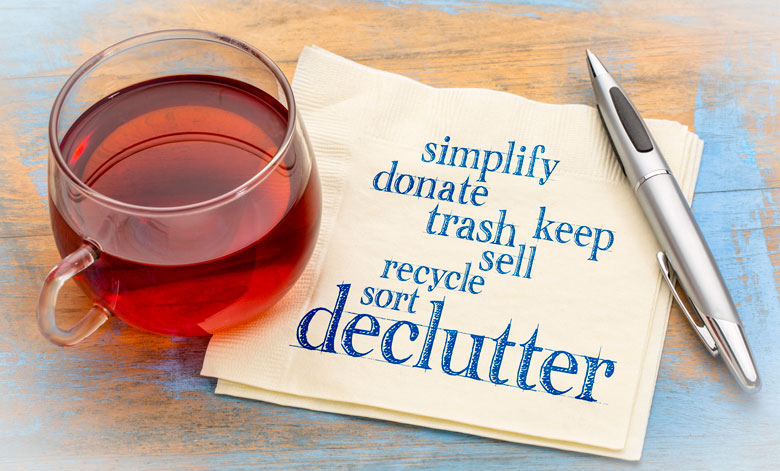
We are all pretty good at accumulating “stuff.” But when it comes to getting rid of things, well, that’s another story. Letting go of things can be hard. It’s so hard that over the past few years we’ve seen the process of decluttering become its own little industry. Decluttering experts like Marie Kondo have become superstars. There are countless books, videos, and web pages available to help you get on the path to becoming clutter-free.
Many things can spur the need to declutter. Often, it’s a life change, such as a move to a smaller home or a divorce. For many people, however, the urge to declutter comes when they start to think about their mortality. It’s then that you come to the realization that you can’t take it with you. Since the stuff isn’t going anywhere, even though you are, you might as well take care of it now. Otherwise, the task is left to those you leave behind.
How Do I Get Rid of All This Stuff?
There are countless approaches to the process of decluttering, but they all have things in common. First, you have to get started. Then comes the culling and sorting, and finally deciding where the heck all that stuff is going to go. No question the process is a big job. But once you find the approach that works for you, it becomes less of a burden and more of a journey.
Remember, there is no right or wrong way to declutter, only what’s most effective for you. If you have no idea where to start, take a look at three popular approaches for inspiration. Pull from them what makes sense for you, and before you know it you’ll have conquered the “stuff” and carry a lighter load.
Swedish Death Cleaning
Made popular by Swedish author Margareta Magnusson in her book “The Gentle Art of Swedish Death Cleaning,” this technique focuses on preparing all of our possessions for what will happen to it after we die. The approach is refreshingly realistic, as it recognizes that we’ll never be fully clutter-free. Perhaps that accounts for the system’s widespread popularity. A hallmark of Magnusson’s approach is that as you go you consider giving items to others who might need and appreciate them.
When you undertake Swedish Death Cleaning, you start with places that are seldom used. This includes attic spaces, hard-to-access closets, out of and out-of-the-way drawers. That way, you aren’t forced to make hard decisions about things you need every day. Stay away from things like photos until later in the process so that you don’t get stalled by going over memories.
For more on Swedish Death Cleaning, see Magnusson’s book, “The Gentle Art of Swedish Death Cleaning.”
KonMari Method
If you are familiar with the KonMari Method’s founder Marie Kondo then you won’t be shocked to hear that her method emphasizes holding on to only those items that “spark joy.” As odd as it may sound, once you learn more about her process and see it in action, you’ll find that it’s not as peculiar as it sounds. If an item makes you happy or gives you a thrill of excitement, then it’s here to stay. Otherwise, out it goes. Take a pair of jeans, for example. When you hold them, how do they make you feel? Do you think about how comfortable they are, or do you remember that you can’t squeeze into them anymore? You get the picture. If they don’t make the cut, then you thank them for their service and put them in the get rid of pile.
Rather than suggest you tackle decluttering a room at a time, the KonMari Method takes items by category—clothes, furniture, toys, etc.
For more on the KonMari Method, visit Konmari.com or watch the Netflix series “Tidying Up With Marie Kondo.”
The Challenge Approach
If you are a frequent user of social media, then you may have seen one of the popular declutter challenges. They pop up most often at the first of the year. One popular challenge features a 91-day version. When you join the challenge, you receive a list of assignments to undertake for 13 weeks. Of course, you don’t have to join someone else’s challenge, you can create your own. Get friends to join in, and before you know it you’ll be encouraging each other to clear out, sort, and give away all kinds of things you no longer need.
Regardless of the approach you decide to take, decluttering can be an extremely satisfying exercise. You’ll have less laundry to worry about, fewer trinkets to dust, and the people who are lucky to get your treasured possessions can enjoy them right away.
